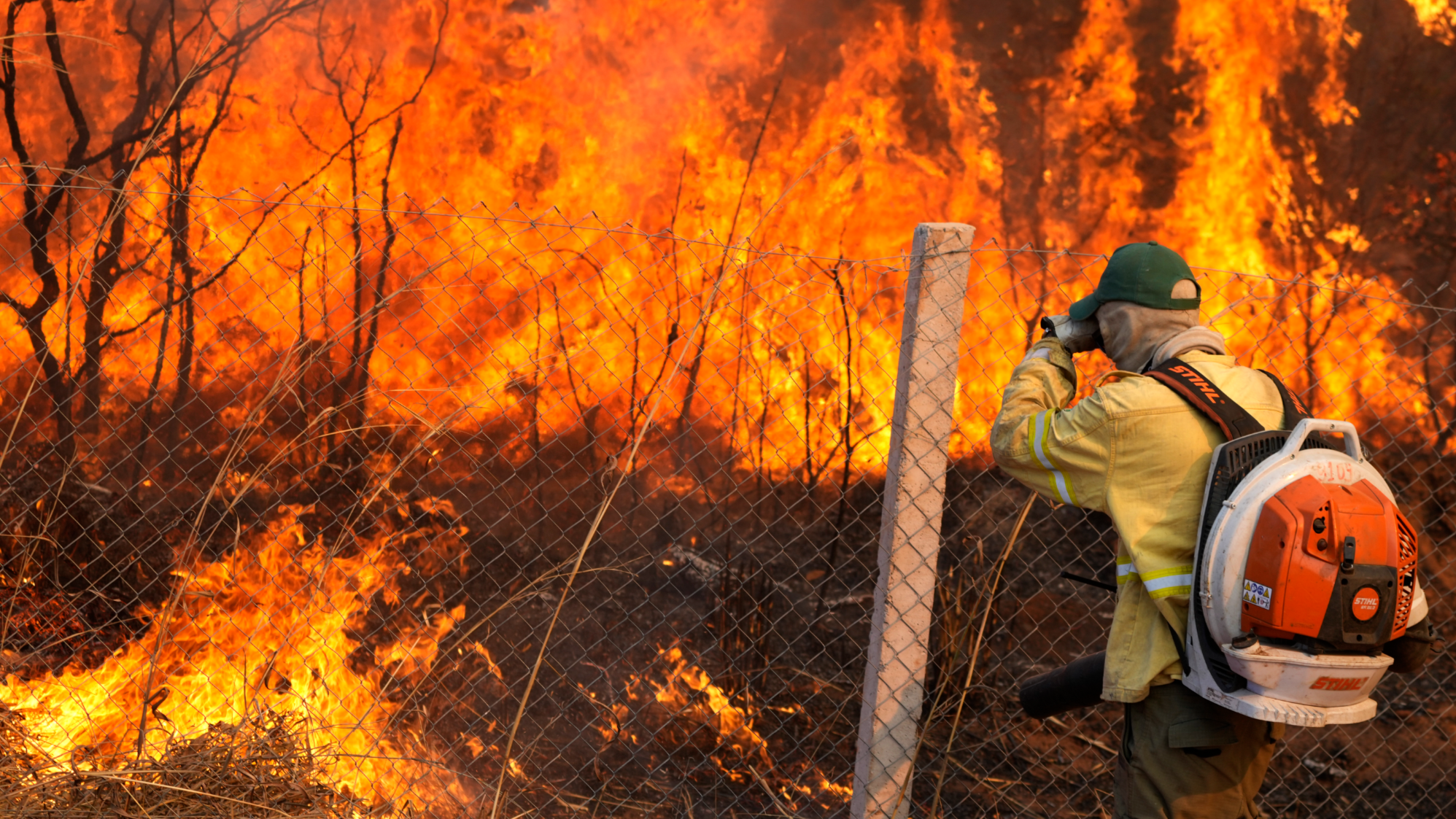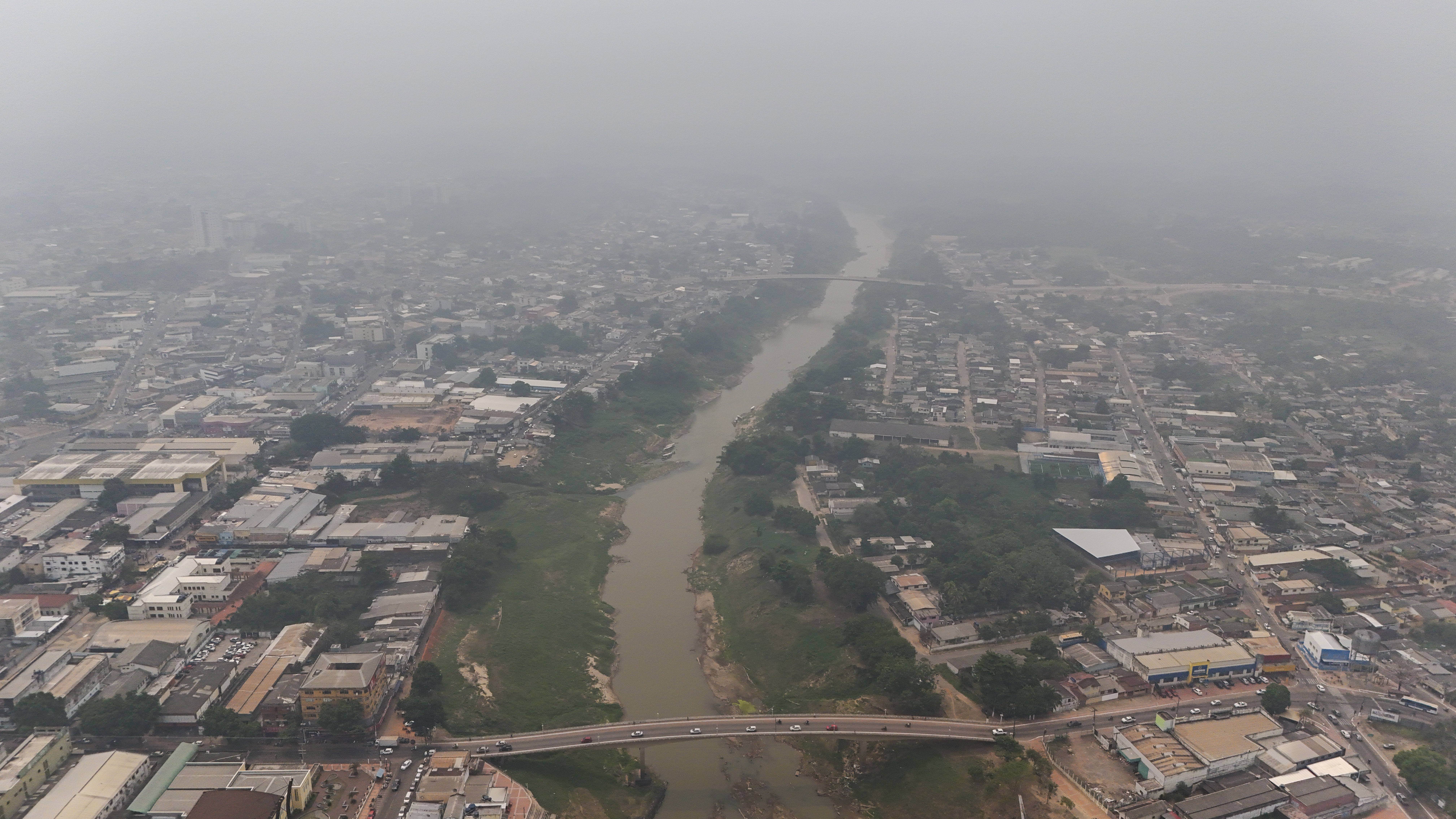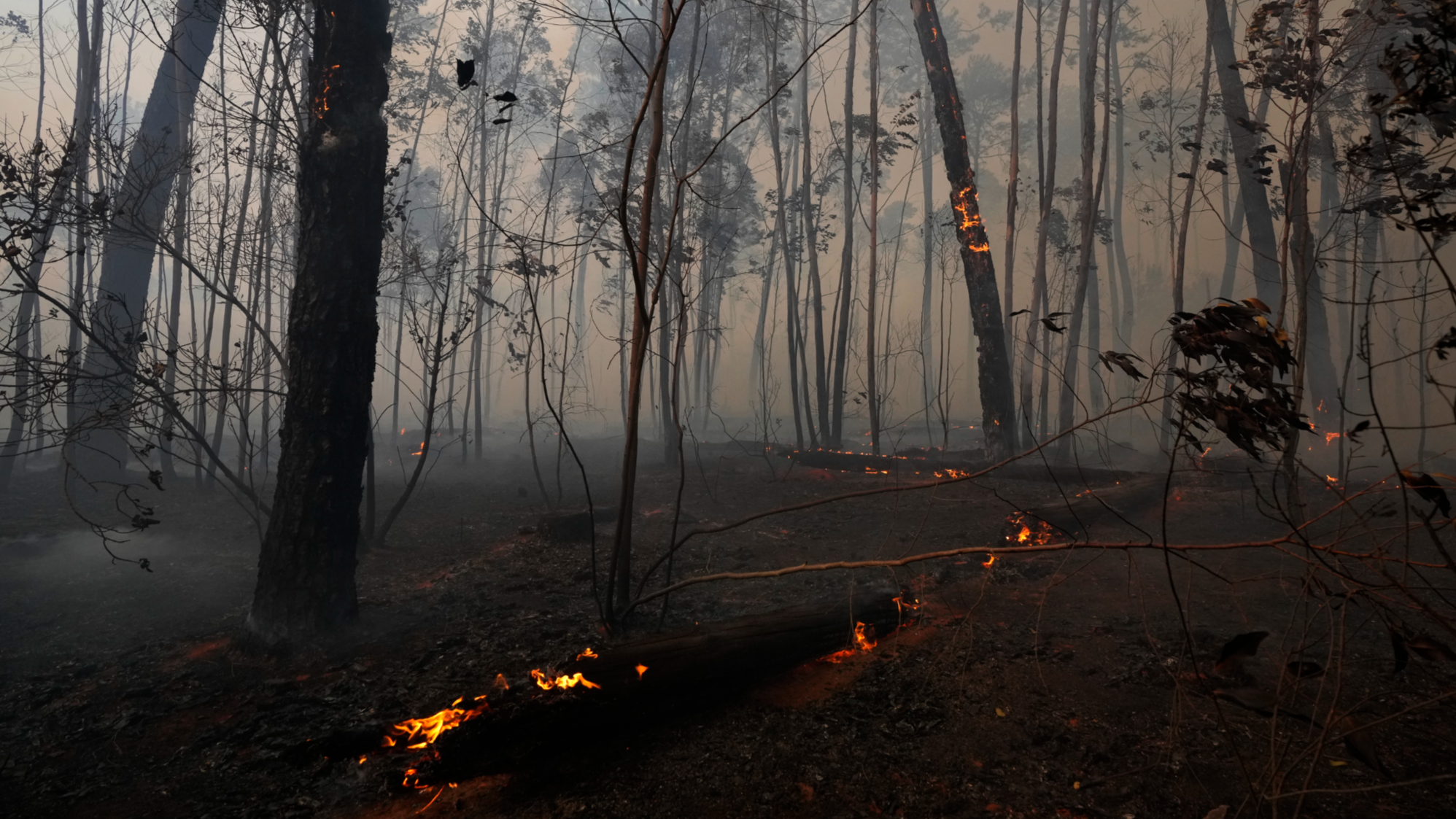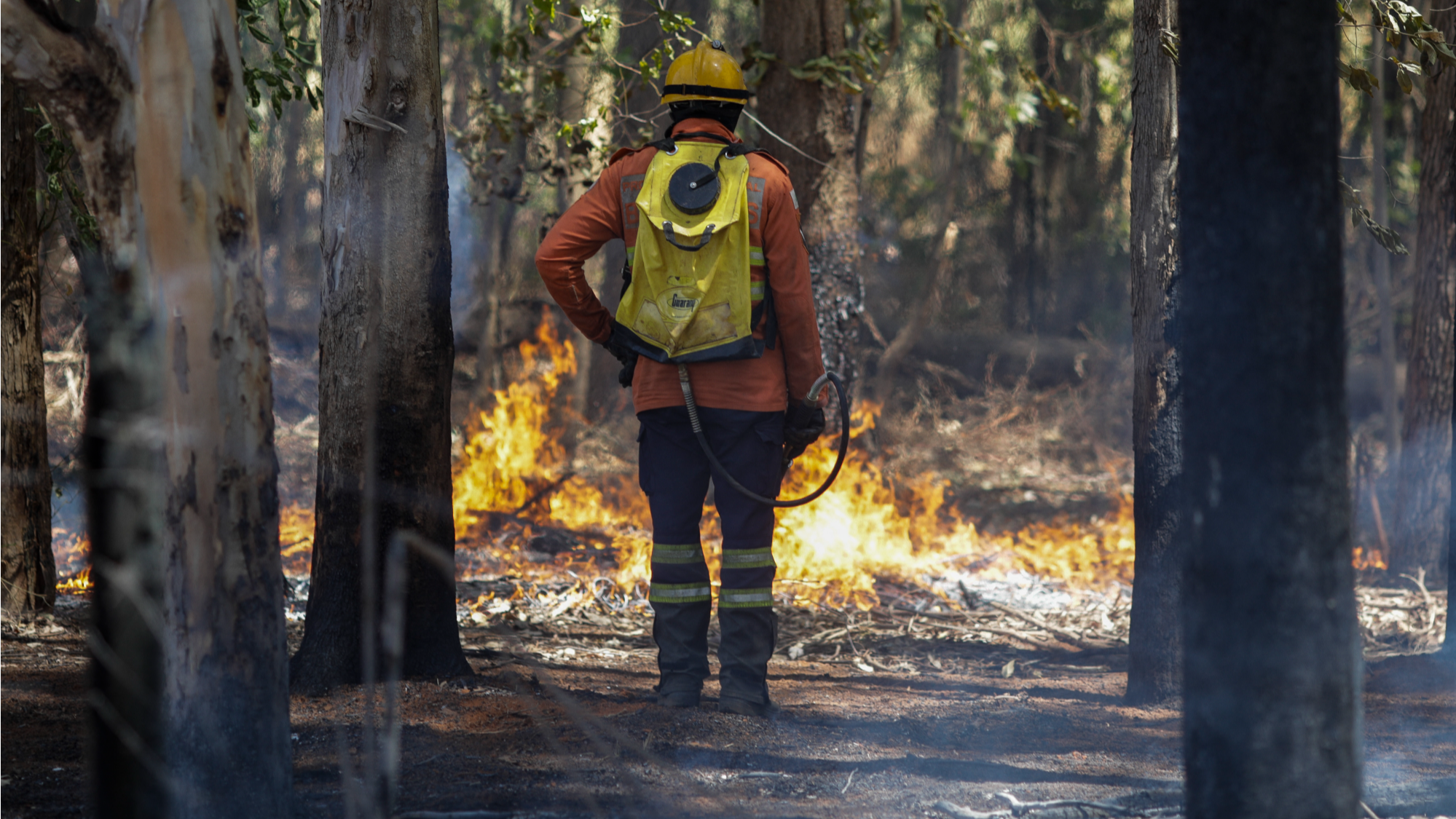
BRASILIA — Firefighters succeeded on Wednesday in reducing the extent of a massive wildfire that blazed for two days and destroyed 20 percent of a forest in the Brazilian capital, cloaking the city in clouds of gray-white smoke, according to officials, who suspect that it may have been started by arsonists.
The National Forest of Brasilia is a conservation area that extends over 5,600 hectares of woodland that protects the springs that are the source of 70 percent of the city's freshwater.
The fire broke out at the peak of the dry season when vegetation is parched and temperatures high allowing flames to spread fast.
READ MORE: Brazil's Amazon rainforest fires in August reach 14-year high
"We have put out three of the four blazes and we hope to have the fire under control by the end of the day," said Fabio dos Santos Miranda, who manages the forest.
"We are sure this was an environmental crime, but we haven't confirmed if it was intentional or not," he said in an interview, adding that three suspected arsonists were seen in the area where the fire started.
Firefighters struggled to contain the forest fire and stop it spreading to adjacent orchards where farmers grow tomatoes and flowers.



"We are working to protect the orchards, but the wind is blowing the fire towards them and the sparks fly a long way." said fireman Major Godoy.
Emilia Vasconcellos, who raises cattle and chickens on a farm at risk of being caught in the blaze, said she thought people had set off the fire to clear land for themselves, but she had no evidence.
READ MORE: Amazon river levels fall due to lack of rain, hurting navigation
The forest was cut in size by almost half in 2022 to give way to urban development by the government of far-right former President Jair Bolsonaro, who reduced environmental controls and allowed deforestation to surge in the Amazon rainforest.
A record drought in the Amazon increased fires in the rainforest for the month of August to the highest level since 2010, government data showed on Sunday.

Last year's rains came late and were weaker than usual because a weather pattern, known as El Nino, was supercharged by climate change, leaving the rainforest especially vulnerable to this year's fires.


